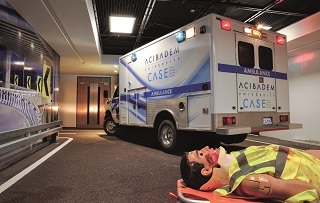Healthcare Innovation and Training Centers
- Memet Ünsal
- 29 Ağu 2019
- 2 dakikada okunur
We have been working on and developing different models for innovations centers for a while. One area which we have focused on in the past is healthcare innovation centers. We have been discussing with colleagues from the medical community what kind of a model would work well in Turkey and also in other countries.
The first time I seriously started thinking and working on innovation in healthcare was after several discussions I had with a general surgeon in Turkey who was complaining that he and his team constantly had new product and process improvement ideas which they could not follow up on because of the intensity of their daily work and the lack of a system which would support product development. What could be a good model to get together people from the medical community with engineers and designers to bring some of these product ideas to life? How could such a model be implemented where hospitals, both state and private, would be natural partners?
One really exciting program for entrepreneurs in healthcare is MIT-Harvard Medical School Healthcare Innovation Bootcamp which will take place in March 2020. Please take a look at this program here. The online courses in user innovation and entrepreneurship offered on edX are also recommended. There are four of these which are a prerequisite to the bootcamp. Here is the first one.
For a list of healthcare innovation centers around the world, take a look at this list pulled together by Mike Squires at eHealthcare Innovation.
One model I will go into in this post is of a healthcare innovation center which doubles as a clinical training center. Training of healthcare professionals is always an important topic. For certain procedures which are very common, the training happens directly in the hospital where the experience is passed on from a master to an apprentice. However, for other procedures which are either brand new or less common, a training facility is critical. With the growth of laparoscopic surgery’s popularity, training in this area has been especially important. Minimally invasive surgery has been replacing open surgeries in many procedures , especially in general surgery, gastrointestinal surgery, gynecology and urology. However, the access to knowledge and training in these procedures has been one of the limitations to the spreading of these surgeries.
We have examined several training centers and the following training areas are recommended.
An operating room where trainees observe the course in all surgical procudures.
A robotic surgery room where advanced robotic operations are conducted.
A dissection lab
A multimedia room where the trainees can both follow the procedures in the operating room and connect to other centers.
A dry lab with box trainers, virtual reality simulators with haptic feedback, robotic surgery simulator, TUR simulator, and endoscopy simulators.
Also, a simulation facility which would have different skills labs would be useful. This facility can have an emergency room, ambulance, intensive care unit, operating room among other things.
For training and education, a curriculum needs to be developed tailored to the needs of interventional cardiologists, radiologists, vascular, general surgeons, gynaecologists, oncologists, spine surgeons, MD physicians, diabetologists, and endocrinologists, nurses and technicians. Below are some photos from a good example from Istanbul, Acıbadem CASE (Center of Advanced Simulation and Education).













Yorumlar